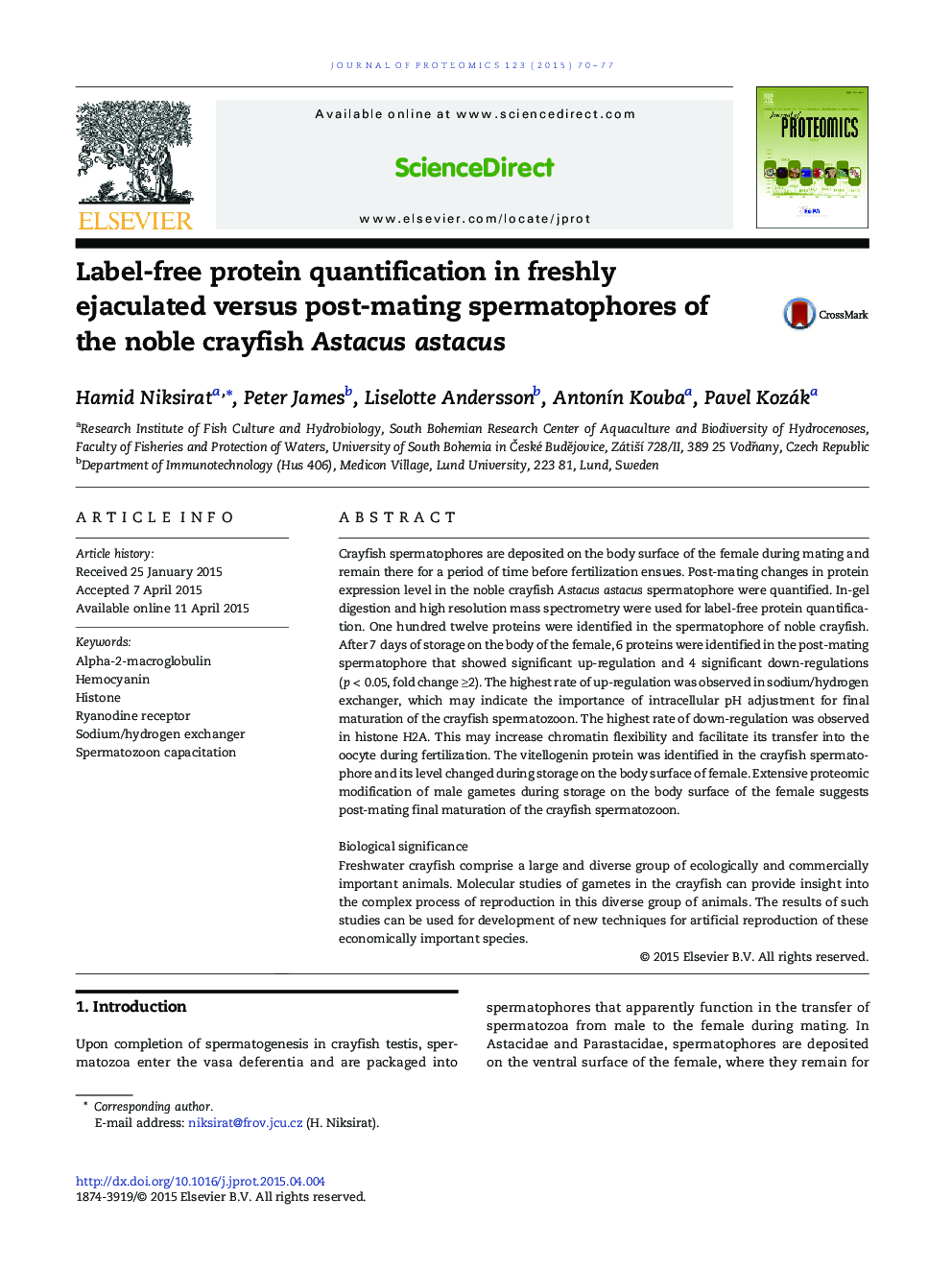| Article ID | Journal | Published Year | Pages | File Type |
|---|---|---|---|---|
| 1226066 | Journal of Proteomics | 2015 | 8 Pages |
•Proteomic changes in the post-mating crayfish spermatophore were studied.•One hundred and twelve proteins were identified in the spermatophore of noble crayfish.•Six and four proteins were up- and down-regulated in post-mating spermatophore, respectively.•Proteomic modification suggests that final maturation of male gamete takes place during storage on the female body.
Crayfish spermatophores are deposited on the body surface of the female during mating and remain there for a period of time before fertilization ensues. Post-mating changes in protein expression level in the noble crayfish Astacus astacus spermatophore were quantified. In-gel digestion and high resolution mass spectrometry were used for label-free protein quantification. One hundred twelve proteins were identified in the spermatophore of noble crayfish. After 7 days of storage on the body of the female, 6 proteins were identified in the post-mating spermatophore that showed significant up-regulation and 4 significant down-regulations (p < 0.05, fold change ≥ 2). The highest rate of up-regulation was observed in sodium/hydrogen exchanger, which may indicate the importance of intracellular pH adjustment for final maturation of the crayfish spermatozoon. The highest rate of down-regulation was observed in histone H2A. This may increase chromatin flexibility and facilitate its transfer into the oocyte during fertilization. The vitellogenin protein was identified in the crayfish spermatophore and its level changed during storage on the body surface of female. Extensive proteomic modification of male gametes during storage on the body surface of the female suggests post-mating final maturation of the crayfish spermatozoon.Biological significanceFreshwater crayfish comprise a large and diverse group of ecologically and commercially important animals. Molecular studies of gametes in the crayfish can provide insight into the complex process of reproduction in this diverse group of animals. The results of such studies can be used for development of new techniques for artificial reproduction of these economically important species.
Graphical abstractFigure optionsDownload full-size imageDownload high-quality image (148 K)Download as PowerPoint slide
